|
Northwest Native Wetlands |
What are Wetlands?
We turned to the United
States Environment Protection Agency's website for
the official answer to this question:
"Wetlands
are areas where water covers the
soil, or is present either at or
near the surface of the soil all
year or for varying periods of time
during the year, including during
the growing season.
Water saturation (hydrology) largely
determines how the soil develops and
the types of plant and animal
communities living in and on the
soil. Wetlands may support both
aquatic and terrestrial species. The
prolonged presence of water creates
conditions that favor the growth of
specially adapted plants
(hydrophytes) and promote the
development of characteristic
wetland (hydric) soils.
"Wetlands vary widely because of
regional and local differences in
soils, topography, climate,
hydrology, water chemistry,
vegetation, and other factors,
including human disturbance. Indeed, wetlands are found from the
tundra to the tropics and on every
continent except Antarctica.
Two general categories of wetlands
are recognized: coastal or tidal
wetlands and inland or non-tidal
wetlands.
|
sm.jpg) |
"Coastal wetlands
in the United States, as their name
suggests, are found along the
Atlantic, Pacific, Alaskan, and Gulf
coasts. They are closely linked to
our nation's estuaries, where sea
water mixes with fresh water to form
an environment of varying
salinities.
The salt water and the
fluctuating water levels (due to
tidal action) combine to create a
rather difficult environment for
most plants. Consequently, many
shallow coastal areas are unvegetated mud flats or sand flats.
Some plants, however, have
successfully adapted to this
environment. Certain grasses and grass-like plants that adapt to the
saline conditions form the tidal
salt marshes that are found along
the Atlantic, Gulf, and Pacific
coasts. Mangrove swamps, with
salt-loving shrubs or trees, are
common in tropical climates, such as
in southern Florida and Puerto Rico.
Some tidal freshwater wetlands form
beyond the upper edges of tidal salt
marshes where the influence of salt
water ends.
"Inland wetlands
are most common on floodplains along
rivers and streams (riparian
wetlands), in isolated depressions
surrounded by dry land (for example,
playas, basins, and "potholes"),
along the margins of lakes and
ponds, and in other low-lying areas
where the groundwater intercepts the
soil surface or where precipitation
sufficiently saturates the soil
(vernal pools and bogs). Inland
wetlands include marshes and wet
meadows dominated by herbaceous
plants, swamps dominated by shrubs,
and wooded swamps dominated by
trees.
|
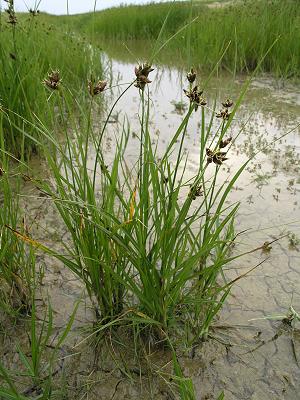 |
"Certain types of inland wetlands are common to
particular regions of the country:
-
bogs and fens of the
northeastern and north-central
states and Alaska
-
wet meadows or wet prairies
in the Midwest
-
inland saline and alkaline
marshes and riparian wetlands of
the arid and semiarid west
-
prairie potholes of Iowa,
Minnesota and the Dakotas
-
alpine meadows of the west
-
playa lakes of the southwest
and Great Plains
-
bottomland hardwood swamps
of the south
-
pocosins and Carolina Bays
of the southeast coastal states
-
tundra wetlands of Alaska.
"Many of these wetlands are
seasonal (they are dry one or more
seasons every year), and,
particularly in the arid and
semiarid West, may be wet only
periodically. The quantity of water
present and the timing of its
presence in part determine the
functions of a wetland and its role
in the environment. Even
wetlands that appear dry at times
for significant parts of the year --
such as vernal pools-- often provide
critical habitat for wildlife
adapted to breeding exclusively in
these areas.
See the EPA website:
http://water.epa.gov/type/wetlands/what.cfm
|
|
The following article was written by Colleen
Stuckey form Vancouver Island, British Columbia. It contains basic information
to help those venturing into wetlands maintenance and restoration. |
|
Wetlands General Information:
Wetlands are extremely rich ecosystems, and are able to support a vast number
of plant and animal species. It is estimated that the wetlands of the United
States support over 5,000 plant species, 270 bird species and 190 species of
amphibians (McCormick, p. 20). Birds, mammals, amphibians, reptiles, fish,
invertebrates and insects – a vast number of species from each group are
dependent on wetlands for their survival.
|
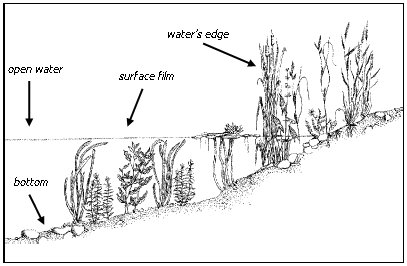 |
|
Wetlands are not only valuable in sustaining wildlife populations; they are
critical to the functioning of healthy watersheds. They do so by the following
functions:
-
Slowing the flow of water and storing water during heavy rains or snow
melts to reduce the risks of flooding.
-
Recharging the water table.
-
Purifying water and reducing pollution.
-
Reducing erosion.
-
Encouraging precipitation and air humidity
|
|
Storing water:
All wetlands have the capacity to store large amounts of water. Wetlands that
develop over a clay soil retain vast amounts of water as water drains slowly
through clay. Peat bogs similarly retain water as decomposed peat has small
particles and does not easily drain. Wetland plants retain more water in their
roots, leaves and stems than dry land plants. Therefore, in times of heavy rain,
wetlands absorb water and hold it, reducing the likelihood and severity of
flooding. As an example, A. McCormick estimates that a single ten-acre marsh can
hold 1.5 million gallons of water (McCormick, p.41).
Slowing the flow of water:
Stems of plants slow the flow of water. The slower the flow of water, the
more water is absorbed into the subsoil and underground aquifers. Furthermore,
the slower the flow of water, the less likely flooding is to occur. Lastly, this
stored water is slowly released in times of drought.
Another advantage to a slowed flow of water is that solid particles settle
before entering streams, rivers and oceans. Both heavy metals and pathogens from
agricultural runoff and sewage are found in particulates and are potentially
very dangerous to life forms when they enter the water system. Once settled, the
roots of certain wetland plants secrete substances that kill pathogens. Heavy
metals, on the other hand, bind chemically to the clay that forms the substrate
of the wetland and are stored there, similar to the way carbon is stored.
Incidentally, designers of wetlands can select different types of clay to absorb
specific metals. This clay layer may need to be removed, disposed of and
replaced periodically to ensure proper functioning.
|
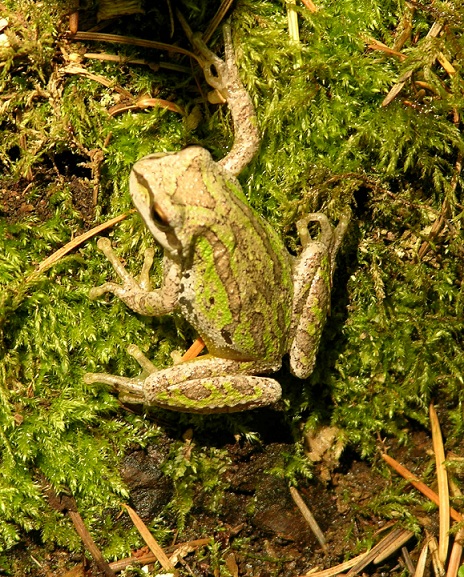 |
|
Not only do pollutants from industrial, agricultural and household wastes
kill animal populations, but so do an excess of nutrients. Nutrients are often
broken down by the wetland and if not, they are stored within the wetland,
accumulating during the growing season when water levels are lower. When water
levels rise after a period of heavy rain or snow melt, the wetland is flooded
and the nutrients that have built up enter the larger bodies of water, feeding
the aquatic plants and micro-organisms. This is important because the nutrients
are entering the body of water only after water levels have risen and are
therefore diluted.
Consider how critical this function is by exploring what happens in a water
system when there is no wetland present to catch excess nutrients. As water
flows over land (during rains or via irrigation), it picks up minerals,
nutrients and fertilizers, pesticides, and pathogens. An excess of nutrients
entering a body of water causes a rapid burst of plant growth, a process called
“algae bloom.” This plant growth is either consumed by zooplankton
(microscopic animals) or dies and sinks to the bottom of the body of water. If
water levels are low, the situation becomes dire. As the zooplankton manure or
dead plant material decompose, all of the available oxygen in the water is used.
Without sufficient oxygen, fish die and this, in turn, kills the species that
depend on the fish – the herons, kingfishers, otters and many more. Wetlands
break down nutrients and store excessive levels of nutrients to be released only
when water levels rise and can therefore support the nutrient charge.
|
|
Recharging the water table:
The slowed water flow recharges the water table by seeping through the
ground. Wetlands also have a profound effect on hydraulic pressure – the
pressure needed to force water upwards from underground aquifers/reservoirs to
springs or drilled wells.
Reducing pollution:
Wetland plants perform the vital task of storing toxins and chemicals.
Organic matter is aerobically (using oxygen) broken down and the nutrients made
available to plant life. When soils become waterlogged, as in a wetland, the
oxygen is used up in the decomposition process and an anaerobic condition
occurs. However, wetland plants have adapted to this condition and they have
developed “aerenchymous” tissue, or aerating tissue, which enables oxygen to
transfer quickly between the leaves and the roots. The oxygen is released
through the roots of the plants and this creates an environment in which
micro-organisms (and other animals and fish) can live. These micro-organisms
feed on the dissolved nutrients so that decomposition can continue.
|
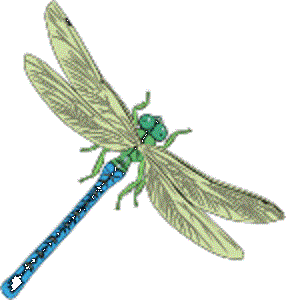 |
|
Another crucial function of a wetland is its ability to store carbons. Bogs
and fens are two types of wetlands that are characterized by vast layers of
peat. Peat forms in waterlogged areas with low oxygen, high acidity and low
levels of nutrients. This is obviously a condition that is not conducive
to plant growth. Plants then begin dying and as there is little aerobic
activity, the plants decompose very slowly, forming layers of half-rotted,
carbon-rich organic matter. Because peat breaks down so slowly, the carbons are
held rather than released into the air as carbon dioxide (greenhouse gas).
Conversely, when a wetland is excavated, mined or drained, oxygen levels
increase and decomposition is accelerated, releasing the stored carbons into the
atmosphere as carbon monoxide. In his introduction to the book Wetlands in
Danger, David Bellamy warns us that if we disturb the world’s peat lands in a
large-scale manner, we would release double the amount of carbon dioxide into
the atmosphere than is already present and thereby profoundly increase
the greenhouse effect (Dugan, p.8).
Throughout the United States, industry and municipal planners are developing
artificial wetlands to purify water. Paper mills and mining companies construct
wetlands to clean industrial waste from waters before they are returned to the
watershed. Similarly, residential planners are building wetlands to filter
sewage. The town of Arcata, California, constructed a 96-acre artificial wetland
to purify waste after research revealed that this system was far more efficient
and less expensive than a traditional sewage-treatment plant (McCormick,
pp.47-48). In fact, it is estimated that “one hectare (2.5 acres) of tidal
wetland can do the job of US $123,000 worth of state of the art waste-water
treatment,” (Bellamy, in Dugan p. 8). Furthermore, wetlands can be constructed
to treat landfill leacheate, agricultural effluent, and to curb the effects of
flooding.
|
|
Increasing precipitation:
Plants absorb water and release it into the air through a process called
evapotranspiration. This adds humidity to the air and, in a large area, can
increase precipitation.
Sulfates entering a wetland are converted to sulfide and released into the
air in various forms. One way they are released is in the form of dimethyl
sulfide, which acts as a catalyst for cloud formation.
NOTE: Oregon's
two native turtles, the Western Pond Turtle and the Painted Turtle, are in
danger of disappearing. Oregon Zoo's conservation project for the Western Pond
Turtle. See
http://www.oregonzoo.org/Conservation/westernpondturtle.htm
Oregon State's Extension Service has more information about how you can make a
real difference for these two little natives. See
http://extension.oregonstate.edu/gardening/things-you-can-do-your-property-help-native-turtles
|
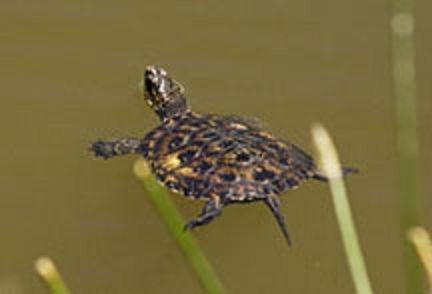
|
|
Reducing Erosion:
The roots of wetland plants stabilize the shores of streams, rivers, lakes
and oceans. Rushes, Sedges and Cattails have quickly spreading root systems to
anchor them in periods when water flows fast or when waves from lakes push hard
against them.
|
Words of wisdom from
An incomplete and
ever-changing catalog of native Plants of Montara Mountain:
"Sedges have edges. The rule to remember in identifying
members of Cyperaceae - and although those edges are sometime pretty
subtle, it holds true for our native species.
They all grow in wet areas, if not right in creeks and ponds,
which is another clue. Stems are usually solid and three-angled
(those edges - you may have to slice it toward the base to really
see it). The leaves, when present, are slender but with a
substantial stem clasping basal sheath with fused edges.
The flowers (or florets in this case) are clustered in spikelets,
with bracts at each floret as well as the spikelet itself. There is
usually 3 stamens, and 2 to 4 feathery stigmas on the pistil.
See
www.plants.montara.com
For a list of Pacific northwest wetland
plants, click here.
|
|
Other northwest natives that work well in the bog garden
or pond:
*PLANT
TYPE KEY:
|
F =
Fern
|
P =
Perennial
|
S =
Shrub
|
T =
Tree
|
W = Wetland
|
|
|
Bibliography:
Delesalle, Bruno in cooperation with Ducks Unlimited and Environment
Canada. Understanding Wetlands: A Wetland Handbook for British Columbia’s
Interior. BC, Canada: Ducks Unlimited Canada, 1998.
Dugan, Patrick, ed. Wetlands in Danger: a World Conservation Atlas.
New York: Oxford University Press, 1993.
Logsdon, Gene. Getting Food From Water: A Guide to Backyard Aquaculture.
Pennsylvania, USA: Rodale Press, 1978.
McCormick, Anita Louise. Vanishing Wetlands. San Diego, California:
Lucent Books, Inc., 1995.
Pettinger, April. Native Plants in the Coastal Garden: A Guide for
Gardeners in British Columbia and the Pacific Northwest. Vancouver,
British Columbia: Whitecap Books, 1996.
Pojar, Jim and MacKinnon, Andy. Plants of Coastal British Columbia
including Washington, Oregon and Alaska. Vancouver, BC: Lone Pine
Publishing, 1994.
Thompson, G. and Coldrey, J. with photos by G. Bernard and illustrations by
G. Thompson. The Pond. Toronto: William Collins Sons & Co. Ltd.,
1984.
Weller, Milton W. Freshwater Marshes: Ecology and Wildlife Management.
Minneapolis, Minnesota: University of Minnesota Press, 1981.
|

sm.jpg)




